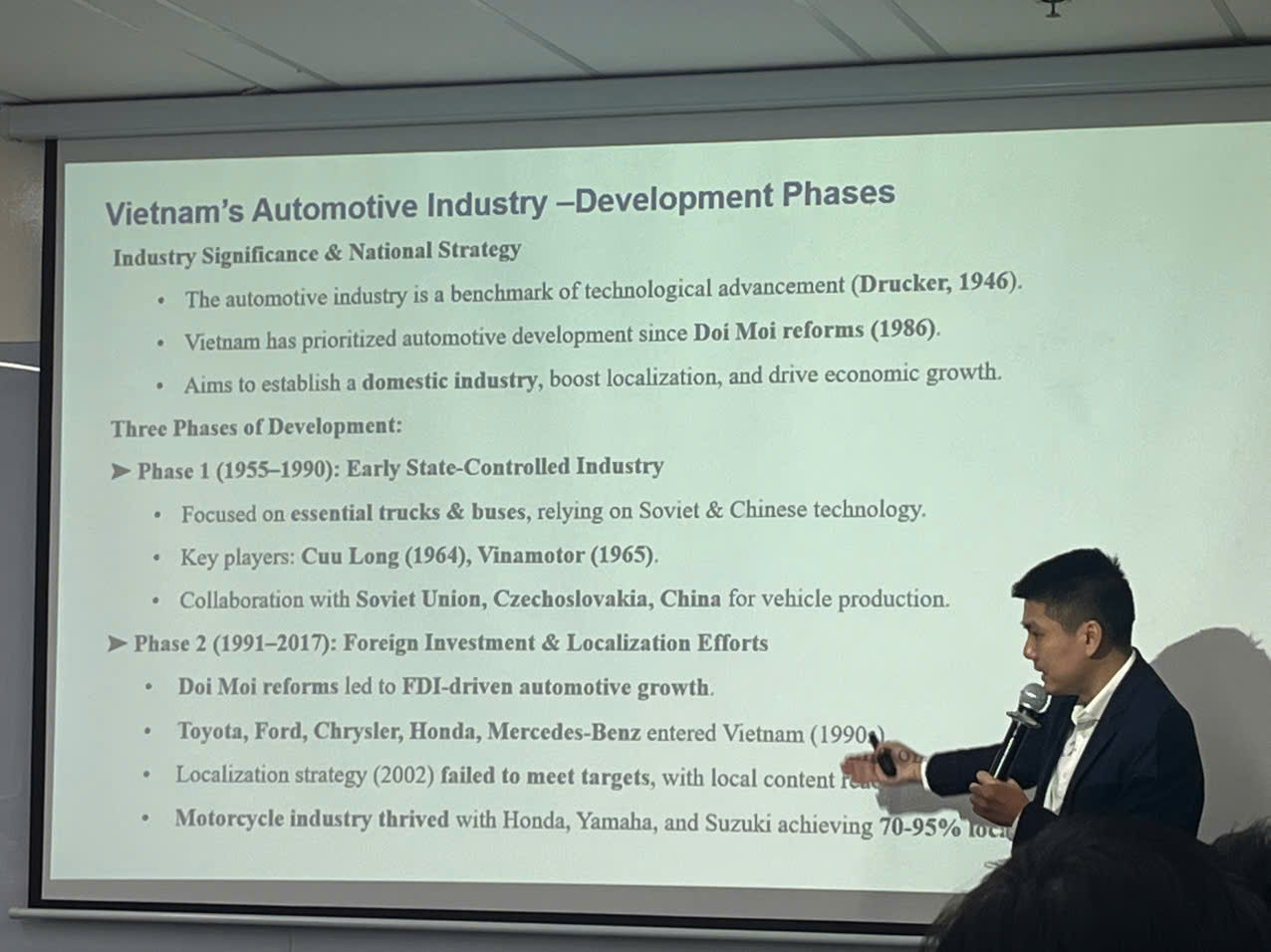Comprehensive Policy Report: Accelerating Vietnam's Transition to Zero-Emission Vehicles
Prepared by: Dr. Pham Van Dai, Fulbright School of Public Policy and Management
Date: Mach 25 2025

Executive Summary
Vietnam stands at a critical juncture in its transportation decarbonization journey. While the country has established ambitious net-zero targets and developed a policy framework for zero-emission vehicles (ZEVs), significant gaps remain in implementation. This report identifies key challenges and proposes actionable solutions to accelerate Vietnam's ZEV transition, with particular focus on stimulating consumer demand, developing infrastructure, and strengthening domestic manufacturing capabilities.
1. Current State of ZEV Adoption in Vietnam
1.1 Market Penetration:
Passenger EVs: 12,000 units (0.5% of total car market)
Electric motorcycles: 2.3 million units (3% of total motorcycle fleet)
Electric buses: Limited pilots in Hanoi and HCMC
Electric taxis: 17,000 units (40% of taxi market)
1.2 Key Growth Drivers:
Government commitments through Decision 876/QD-TTg
Private sector leadership (VinFast, Xanh SM)
Rising consumer interest (78% consider switching to EVs)
1.3 Major Barriers:
High upfront costs compared to ICE vehicles
Limited charging infrastructure (3,000 stations, mostly VinFast-exclusive)
Consumer concerns about battery life and maintenance
Low domestic production capacity for key components
2. Comparative Policy Analysis
2.1 Demand-Side Incentives:
Vietnam: Registration fee exemption, reduced excise tax (3%)
Regional Peers:
Thailand: $3,090 EV subsidy
Indonesia: $460 electric motorcycle rebate
China: Comprehensive purchase subsidies
2.2 Infrastructure Development:
Vietnam: Reliant on private investment (VinFast)
Best Practices:
Norway: Nationwide charging network
California: Utility-led infrastructure programs
3. Policy Recommendations
3.1 Demand Stimulation Measures:
Immediate Implementation:
Point-of-sale rebates (500 − 500−2,000 based on vehicle type)
Low-interest loan programs for ZEV purchases
Road tax exemptions for ZEV owners
Medium-Term Measures:
ICE vehicle phase-out roadmap with clear milestones
ZEV purchase mandates for government fleets
3.2 Infrastructure Development:
Public charging:
Minimum 1 public charger per 10 EVs by 2025
Open-access standards for all charging stations
Home charging:
Building code amendments for EV-ready parking
Tax credits for residential charger installation
3.3 Industrial Policy:
Local manufacturing:
15% tax credit for ZEV component production
R&D grants for battery technology development
Workforce development:
EV technician training programs
University partnerships for engineering talent
4. Implementation Roadmap
Phase 1 (2024-2026):
Launch consumer incentive programs
Establish charging infrastructure standards
Initiate pilot projects in major cities
Phase 2 (2027-2030):
Expand incentives nationwide
Implement ZEV sales mandates
Begin ICE vehicle phase-out
Phase 3 (2031-2035):
Full transition to ZEVs for public transport
Comprehensive charging network coverage
Export-oriented ZEV manufacturing
5. Monitoring and Evaluation Framework
Key Performance Indicators:
Annual ZEV sales growth
Charging infrastructure density
Domestic content in ZEV production
Job creation in ZEV sector
Conclusion
Vietnam's ZEV transition presents both a climate imperative and economic opportunity. By implementing the comprehensive policy framework outlined in this report, Vietnam can position itself as a regional leader in clean transportation while meeting its net-zero commitments. Success will require coordinated action across government agencies, private sector stakeholders, and international partners.
Appendices
Detailed cost-benefit analysis of proposed policies
Case studies of successful ZEV transitions
Technical specifications for charging infrastructure
Audience: Policymakers, industry leaders, investors, and international development partners engaged in Vietnam's clean transportation transition.
This version presents the information in a more formal, structured report format suitable for policy audiences, while maintaining all the key analytical points and recommendations from the original content. The language is professional yet accessible, with clear section headings and logical flow.





